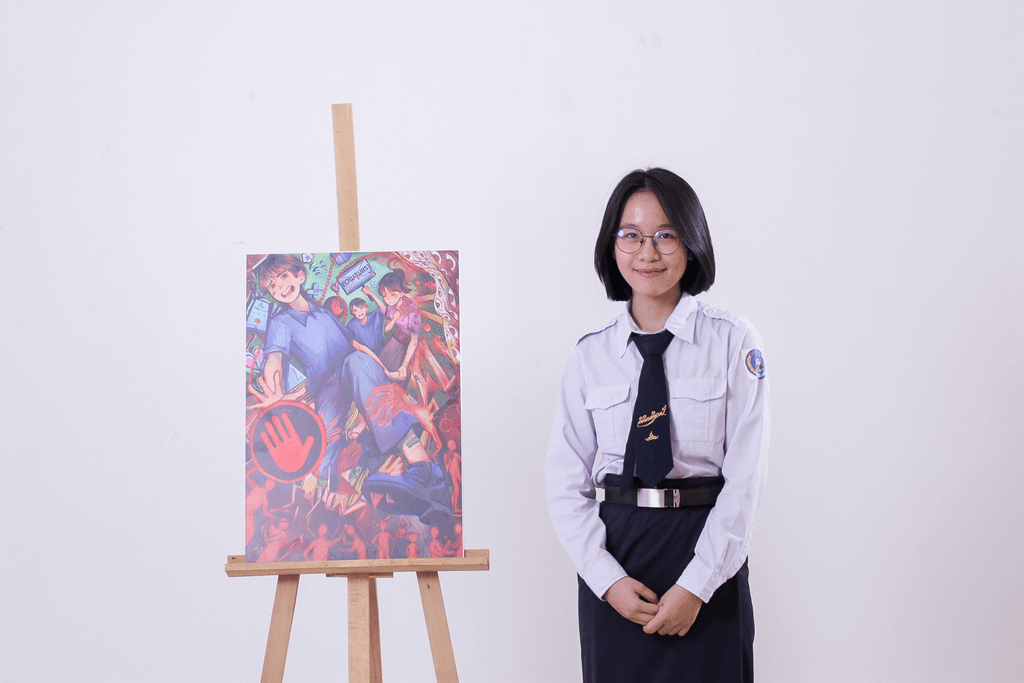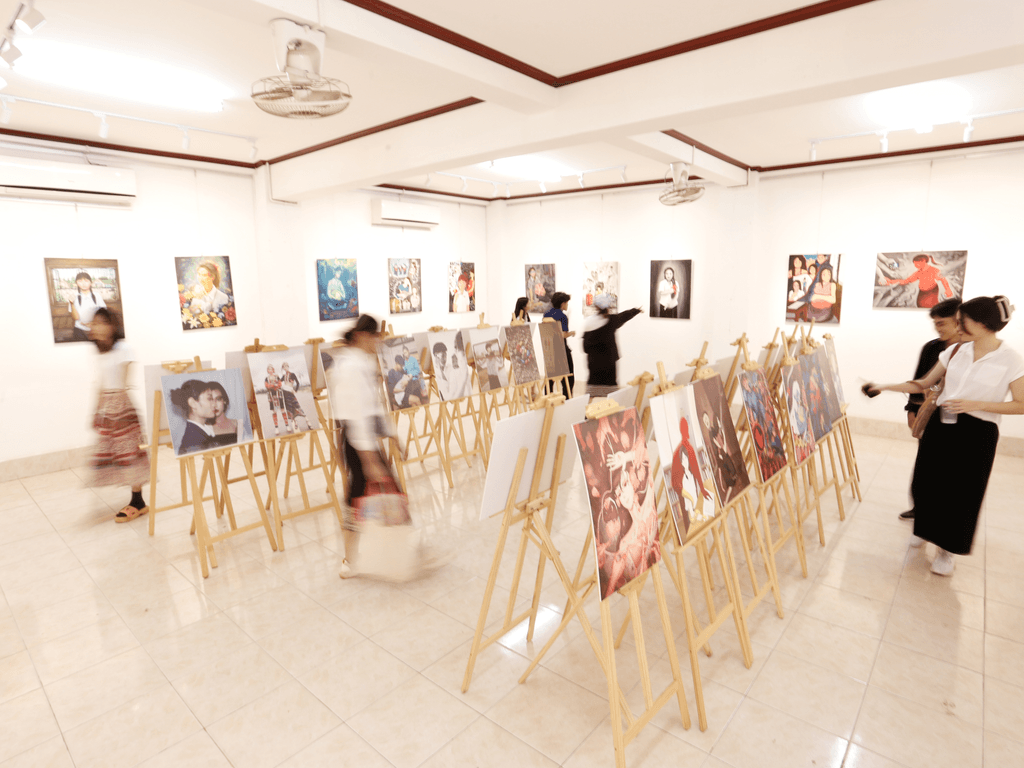A young artist finds her voice
A spark ignited Vannapha's fire. An art competition on gender-based violence, themed "Promoting Gender Equality, and Ending Violence against Women and Girls" resonated deep within her. Vannapha poured her heart onto the canvas, crafting a digital artwork that spoke volumes.

Photo credit: Plan International Laos
Vannapha, a 19-year-old with dreams as big as her manga heroes, had always battled self-doubt after facing rejections in art competitions. Yet, her passion for digital art burned bright, fuelling her to keep creating.
Art that combats gender-based violence
Last December, a spark ignited her fire. An art competition on gender-based violence, themed “Promoting Gender Equality, and Ending Violence against Women and Girls” resonated deep within her. Vannapha poured her heart onto the canvas, crafting a digital artwork that spoke volumes.
Her piece, depicting girls and young women bravely escaping violence, stood out with its stark red hues symbolising danger and violence. This time, the judges saw not just art, but a powerful message. Vannapha won first place, and her world shifted.
“Keep creating, keep fighting, your voice will be heard.”
Vannapha
“Running away isn’t easy. It takes bravery and cunning to escape situations like sexual harassment. We all need to be aware and alert against various forms of violence,” said a 19-year-old amateur artist from the National Institute of Fine Arts. Vannapha’s submitted art piece, titled “Runaway,” symbolises the fight and escape from gender-based violence.
It is more than a trophy
News of her victory spread like wildfire. Recognition bloomed at school, whispers transforming into cheers. But the sweetest reward was her parents’ beaming pride. They, who once hesitated about her artistic path, now saw the potential, the passion, the power in their daughter’s hands.
This win wasn’t just a trophy; it was validation. Vannapha, the once-undiscovered artist, was now seen and celebrated. More importantly, her parents’ newfound support, along with the tools they gifted her – a tablet, a gateway to endless artistic possibilities – fuelled her dreams like never before.
Vannapha’s story is more than just about winning a competition. It’s about the unwavering spirit of a young artist, the transformative power of art, and the unwavering support that can turn self-doubt into a resounding chorus of “I believe.” It’s a story that whispers to every dreamer, “Keep creating, keep fighting, your voice will be heard.”
Across Laos, girls face harmful social norms that silence and limit their choices. But a creative spark is igniting change. Plan International, alongside passionate artists and educators, is empowering vulnerable girls and young women through the “My Body, My Rights” project.
In Bokeo and Oudomxay provinces, and now across the nation, this project provides girls with vital knowledge about sexual health, leadership skills, and life skills. On International Day of Ending Violence Against Women and Girls, over 120 young artists stormed the norms through their art, boldly confronting issues like early pregnancy and gender-based violence in a powerful exhibition in Vientiane capital.
These vibrant pieces, more than just art, are stories of resilience, hope, and a generation rising to demand a more equal future. By amplifying their voices and sparking conversations, Plan International is helping to rewrite the narrative for girls and young women in Laos.
“My art piece highlights that running away or employing clever tactics can be survival strategies,” she continues. “The most important thing is to reach out for help and rely on trustworthy friends.”
Vannapha explains the characters she digitised: girls and young women defending themselves and fighting against gender-based violence. She explains violence includes bullying, teasing, pressure to drink, and even non-verbal harassment. “Don’t dismiss it as normal; it’s abusive.”

Photo credit: Plan International Laos
Vannapha’s parents embraced her passion
“This is my first time winning first prize,” she beams. “After receiving it, my friends recognised and appreciated my work. My parents, who initially wanted me to study accounting and English, finally accepted and supported my passion.”
Vannapha’s love for drawing started young, evolving from paper to digital art during the Covid-19 pandemic. She practiced on mobile apps, studied drawing videos on YouTube, and cultivated friendships with fellow artists on social media. “Despite my parents’ disapproval, I chose to follow my passion,” she says. “I now earn income from selling my art, and winning the prize opened their eyes to drawing as a viable career. They now fully support my education and artistic pursuits.”
“My dream is to create manga for Japanese organisations,” shares Vannapha. “I also hope society embraces Lao art by offering more public events and encouraging participation. I used some of my prize money to acquire more digital art materials.”
“Using art to highlight harmful social norms is both smart and insightful,” concludes Khamsouk Keovongxay, General Director of the National Institute of Fine Arts. “However, it’s a topic rarely expressed through this medium.”


